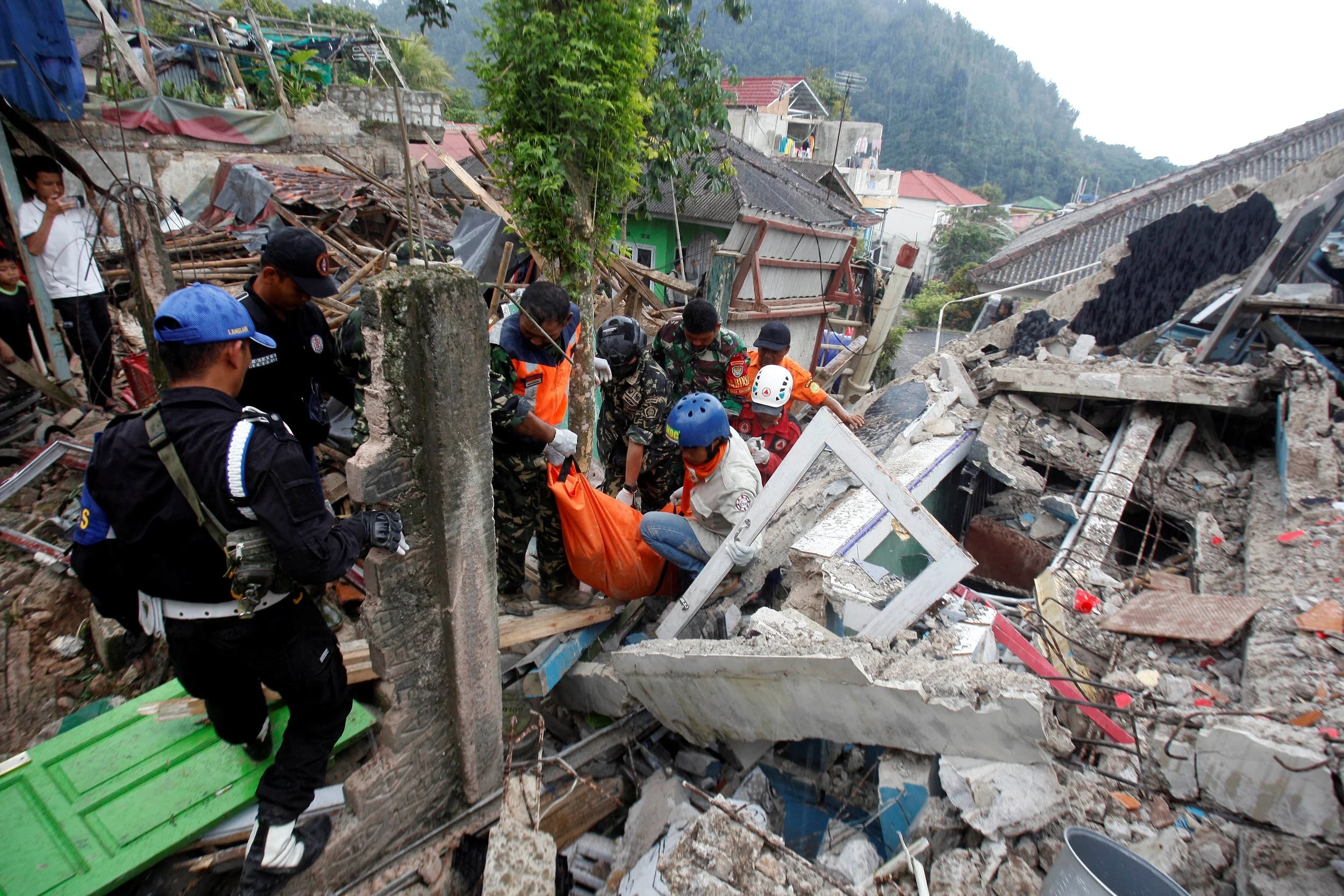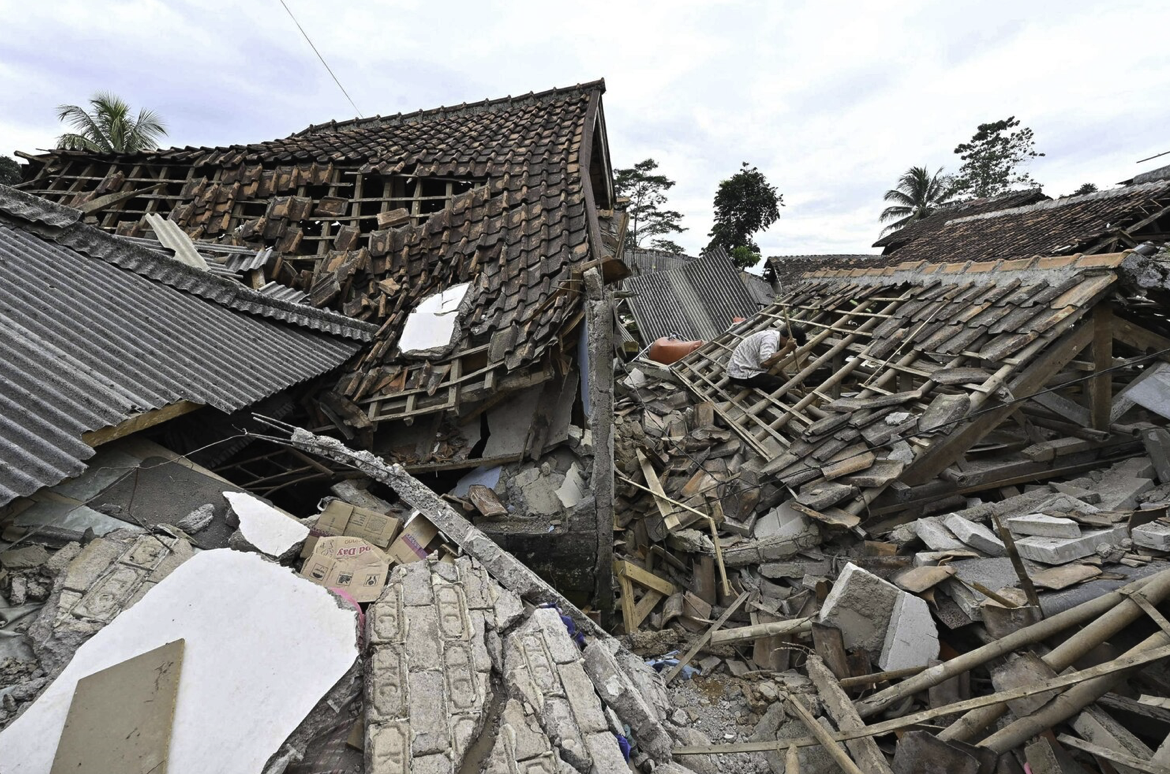Displacement and Death: The Disproportionate Impacts of Disasters in Indonesia
Sometimes I wonder why we don’t learn about current events in school. It might just be my own thoughts, but it never felt right to me that amongst the suffering of so many we learn thousands of years old history while war and devastation is made before our eyes. I hear miscellaneous bits and pieces from the news, which many times strays from being non-partisan, so I ventured to find what I could about current affairs in order to understand society and human behavior a little better. After learning about the calamitous situation in Indonesia, I wanted to see if a solution could be found. Not a bandaid, but an actual, feasible solution.
On November 21, 2022, tragedy struck West Java, Cianjur, Indonesia. An earthquake of 5.6 magnitude reigned devastation upon the un-expecting Indonesian citizens. 8,100 houses were destroyed and 335-635 people were found dead, a third of these deaths were of children trapped under ill-constructed school buildings. These children died due to insufficiently built homes and schools, unable to find safety in places they call home. Living with the fear of death under your feet and desolation in the four walls surrounding, this is a disaster that must be solved.
November 21st Earthquake, image from Reuters
Economics and infrastructure go together in assuring public safety. Though having the world’s 16th largest economy, Indonesian citizens constantly battle with displacement and death due to natural disasters. The spike in the Indonesian economy resulted from the demand for palm oil hence causing a massive rise in Indonesian product consumerism. Though sounding beneficial, in actuality this weakened pre-existing systems and promoted a stronger inequitable hierarchy where a cycle of demise ensued. The problem lies in the roads, houses, and streets which civilization depends on. The problem is underlying and will remain unchanged unless an entirely new system is created. Throughout the years, earthquakes have totaled an astonishing 160 trillion IDR (10.6 billion USD) in damages over the past thirty years. The July/August Lombok earthquake of 2018 impacted 440,000 by displacement and 550 by death while the earthquake tsunami in Sulawesi caused 170,000 displaced and 4,400 dead. It is continuous and unceasing, though aid is given for the after-effects, there is more that can be done to mandate the safety of the Indonesian people.
Devastation from the earthquake, image from ABC News
The most effective solution to this issue is grant money for safety shelters and earthquake-proof buildings. The West Java quake, which stretched to Jakarta, was an incentive to earthquake-proof more buildings in populous cities, the Menara Astra in Jakarta was the first building to follow the design of earthquake-proof buildings in Japan. In 2021, Indonesia got an approved loan from the World Bank to build high-tech infrastructure and disaster-proof structures, and $600 million was set aside for building projects. Additionally, in recent years Indonesia has implemented advanced earthquake, tsunami, and volcano modeling systems cultivated by government scientists. But as stated this is enough to ensure personal and societal security. With homes and schools generally built on soft soil and not built to withstand geological disasters, numerous deaths and displacements occur in each instance of an earthquake in Indonesia. With this in mind, “safety shelters'' should be built with reinforced concrete bases and internal infrastructure modeled after Japan’s earthquake-proof buildings. Fresh air filters, imperishable food rations, and first aid supplies would be available to limit the amount of disease spread, malnutrition, and wound infection. This solution, if correctly funded, would greatly impact the health, safety, and security for populations worldwide, especially targeting countries with underdeveloped infrastructure such as Indonesia, Haiti, and Bangladesh. Focusing mainly on these undeveloped/developing countries, a single earthquake-proof building costs approximately ~$3000 - ~$7000, Indonesia with its 38 provinces would have 200 per province approximately totaling ~$22,800,000 - ~$53,200,000 million for the country. Continuing this process starting in the countries; Haiti, Papua New Guinea, Bolivia, Nepal, Iran, Syria, Nicaragua, Turkey, and El Salvador would begin to alleviate the stress earthquakes cause.

